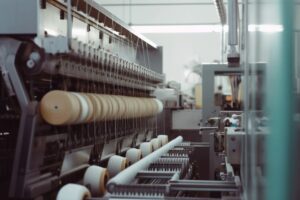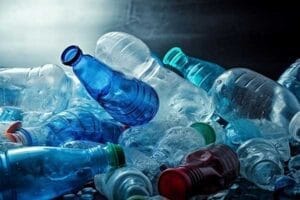PLA is one of the mainstream bio-based and biodegradable plastics with mature industrialization, large production volume and wide application. PLA has high mechanical strength and transparency, but its poor heat resistance, toughness and durability limit the application. For this reason, it is necessary to improve the aging resistance of PLA in terms of hydrolysis from the perspective of product application.

01 Reasons for spontaneous hydrolysis of PLA
Polylactic acid (PLA) is a completely degradable polymer material called “green plastic”, which has good biodegradability and can be completely degraded by microorganisms in nature after use, eventually generating carbon dioxide and water, without polluting the environment.
With good degradability, PLA also has good mechanical and physical properties and is suitable for various processing methods such as blow molding and injection molding. It can be made into fibers, films, blocks and boards for processing.
The market prospect of PLA is very promising from industrial to civil use, including food packaging, fast food lunch boxes, non-woven fabrics, agricultural fabrics, health care fabrics, wipes, sanitary products, outdoor UV protection fabrics, tent fabrics, ground mats, etc.
The fast decomposition rate of PLA in high temperature and high humidity conditions affects the application of PLA plastic in many aspects. Therefore, how to reduce the degradation rate of PLA plastics and achieve controlled degradation is the key in the application of PLA products.
The degradation of PLA resin in air is mainly due to the hydrolysis after moisture absorption. When the hydrolysis starts, the amount of end carboxyl groups of hydrolysis products gradually increases, accelerating the rate of hydrolytic degradation, which is a catalyst for further accelerated hydrolysis. The ways to solve the fast degradation rate of PLA resin currently mainly inlude crystallization and capping methods.
1. From the aspect of raw material synthesis, the stability of raw material resin is ensured by the preparation of high purity propylene cross ester.
2. Using end-capping agents to ensure the stability of PLA resin end groups. The most common method is the use of anti-hydrolysis agents. Polycarbodiimide, a typical anti-hydrolysis additive, can effectively capture the terminal carboxyl group of PLA molecule and stop the rapid decomposition of PLA molecule, so as to achieve the controllability of degradation time.
HyMax 210, the polycarbodiimide anti-hydrolysis agent produced by Langyi New Materials is specially used in degradable plastic industry and has been effectively verified in many products. The addition of HyMax 210 has rapidly improved the anti-hydrolysis performance of PLA, PBAT and other bio-degradable materials. It greatly improves the shelf life of the product and the control of the degradation time. Besides, it is convenient to add the anti-hydrolysis material without changing the production line.

Testing effect of Anti-hydrolysis added PLA




